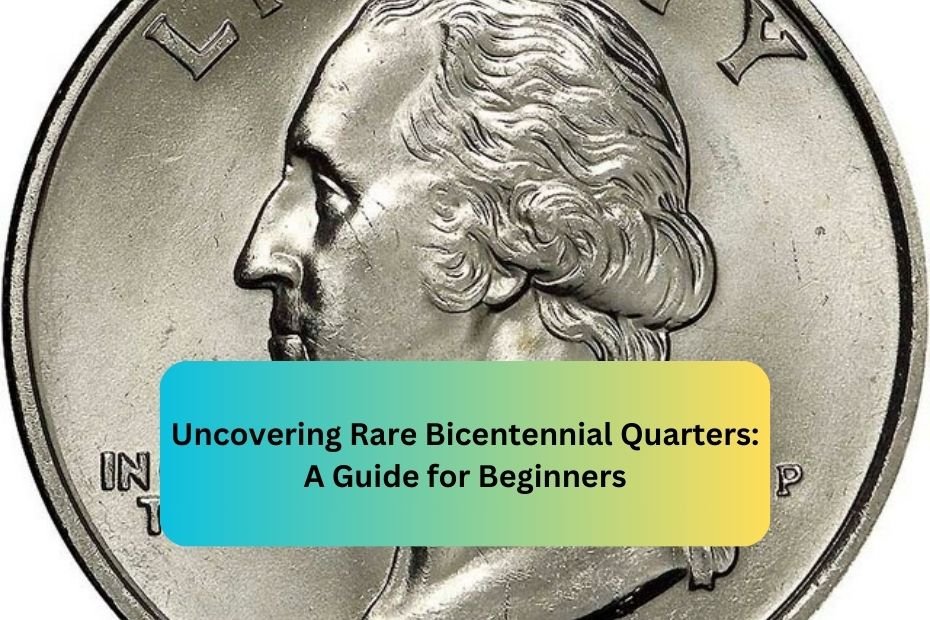The Bicentennial Quarter, minted in 1975 and 1976, marks a significant moment in American history, commemorating the 200th anniversary of the United States. With its unique design and limited production, it has become a point of interest for both novice and seasoned coin collectors. This guide will help you understand the rarity, value, and collecting strategies for these iconic quarters.
Understanding the Bicentennial Quarter
Historical Context
The Bicentennial Quarter features a special reverse design, showcasing a drummer from the Continental Army, which represents the spirit of independence and patriotism. The obverse retains the familiar profile of George Washington. The quarters were minted in two different years, but the designs were identical, with the notable difference being the date.
- Minting Years: 1975 and 1976
- Design: The reverse features a colonial drummer, while the obverse showcases George Washington.
Why Collect Bicentennial Quarters?
- Historical Significance: These quarters celebrate the 200th anniversary of the United States.
- Unique Design: The design is distinct from standard quarters, making it appealing to collectors.
- Potential Value: Some rare variations can be worth significantly more than their face value.
Identifying Rare Bicentennial Quarters
While many Bicentennial Quarters are common and easily found, some are rare and sought after. Here are key factors to identify rarer coins:
1. Mint Marks
Bicentennial Quarters can have different mint marks, indicating where they were produced. The three main mint marks are:
- P (Philadelphia Mint): No mint mark is present on quarters minted in Philadelphia during this time.
- D (Denver Mint): Quarters from Denver will have a “D” mint mark.
- S (San Francisco Mint): Quarters with an “S” mint mark were produced for collectors and are usually proof coins.
2. Special Variations
Certain variations of the Bicentennial Quarter are rarer and more valuable. Here are some to look out for:
- 1976-S Proof Quarter: These were produced for collectors and typically come in higher quality. They are made with a special process, making them shinier and more detailed.
- 1976-D Type 1 vs. Type 2: The Type 1 quarters feature a flat bottom to the “R” in “Liberty,” while Type 2 quarters have a pointed bottom. Type 1 is considered rarer.
3. Condition Grading
The condition of a coin significantly affects its value. Coins are graded on a scale from 1 to 70, with higher numbers indicating better condition. Common grades include:
- Good (G): Heavy wear, but details are still visible.
- Very Fine (VF): Moderate wear with clear details.
- Uncirculated (MS): No signs of wear, as if freshly minted.
Finding Bicentennial Quarters
Where to Look
- Change: Start by checking your pockets and piggy banks for any quarters from 1975 or 1976.
- Coin Dealers: Visit local coin shops or attend coin shows to find more rare coins.
- Online Marketplaces: Websites like eBay and Etsy often have listings for Bicentennial Quarters.
What to Look For
- Uncirculated Coins: These coins are typically found in collector sets and are worth more.
- Varieties with Errors: Look for coins with misprints or other errors that can increase their value.
Pricing and Valuation
The value of a Bicentennial Quarter can range significantly based on its rarity and condition. Here’s a rough pricing guide:
- Common Circulated Quarters: Generally worth face value (25 cents).
- 1976-S Proof Quarters: Can range from $5 to $20 or more, depending on condition.
- Rare Varieties: Some quarters can be worth hundreds of dollars, especially in pristine condition or if they have notable errors.
Tips for Beginners
- Educate Yourself: Learn more about coin grading, minting processes, and historical contexts to make informed decisions.
- Join a Community: Connect with fellow collectors through local clubs or online forums. Sharing knowledge and experiences can enhance your collecting journey.
- Handle Coins Properly: Always handle coins by the edges to prevent wear and oils from your skin from damaging their surfaces.
- Invest in Storage: Use coin holders or albums designed for collectors to protect your coins from damage.
Conclusion
Collecting Bicentennial Quarters can be a rewarding hobby, offering insights into American history while providing the thrill of hunting for rare coins. By understanding the unique characteristics of these quarters and learning how to identify rarities, beginners can embark on an exciting journey into the world of coin collecting. With patience, education, and a keen eye, anyone can uncover the hidden treasures that these iconic quarters may hold.
FAQs
1. What makes the Bicentennial Quarter special?
The Bicentennial Quarter commemorates the 200th anniversary of the United States with a unique design featuring a drummer from the Continental Army on the reverse side.
2. How can I tell if my Bicentennial Quarter is valuable?
Factors like mint marks, condition, and rarity of the specific coin type can affect its value. Coins in better condition and rarer varieties are generally worth more.
3. Where can I find Bicentennial Quarters?
You can find them in your change, local coin shops, or online marketplaces like eBay.
4. What should I do if I think I have a rare quarter?
If you suspect your quarter is rare, consider having it appraised by a professional coin dealer or numismatist to determine its value.
5. How should I store my coins to keep them in good condition?
Use coin holders, albums, or safe storage methods to protect your coins from damage, dirt, and humidity. Avoid touching the surface of the coins directly.

